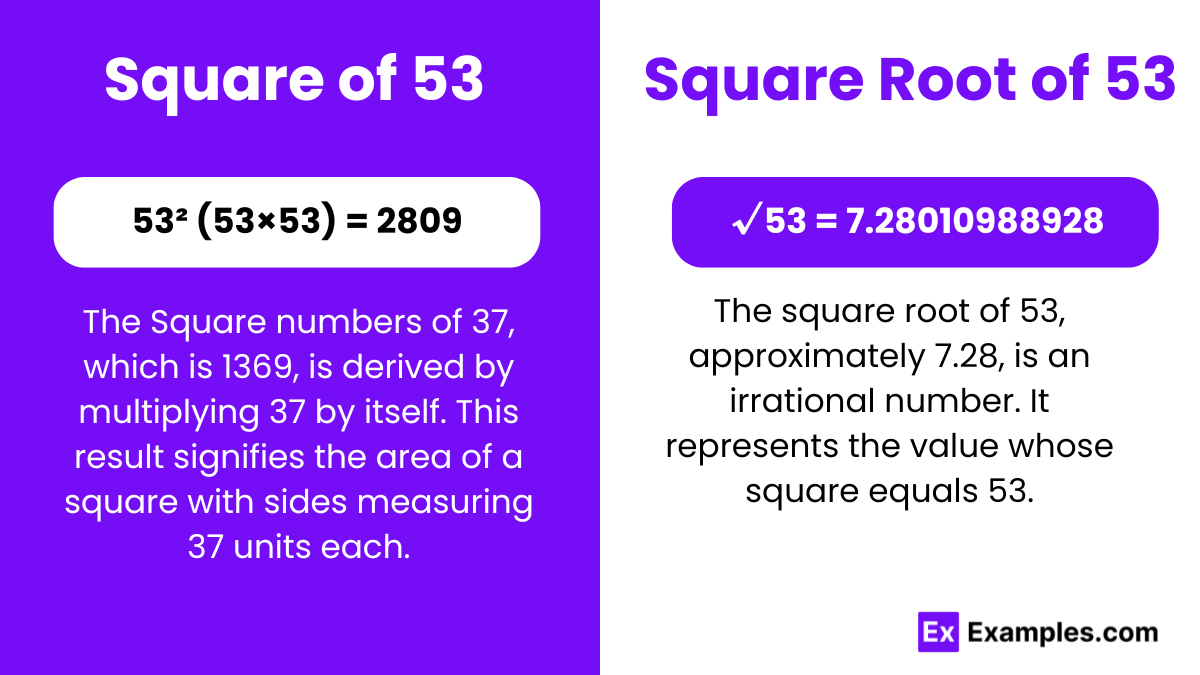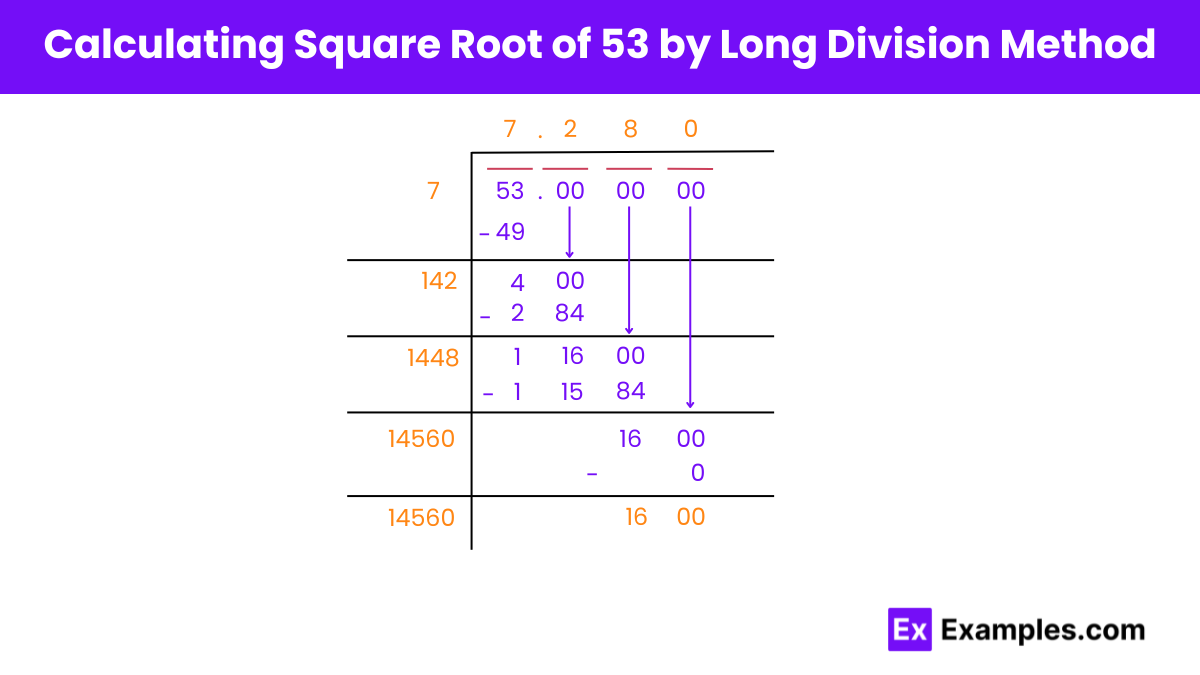What is the square of 53?
2704
2809
2601
2904


In algebra, squares and square roots are pivotal. Squaring a number, like 53 to yield 2809, is fundamental. It underpins exploring rational and irrational numbers’ properties. Rationals are expressed as fractions, while irrationals evade such neat representations. Understanding these concepts enriches mathematical comprehension, unveiling intricate relationships and patterns, fundamental in mathematical inquiry.
The square of 53, a square number, is 2809. Obtained by multiplying 53 by itself, it illustrates the fundamental operation of squaring in mathematics.
Or
√53 = 7.280 Upto 3 decimals
The square root of 53 is approximately 7.28. It represents the value whose square equals 53. Understanding square roots unveils the relationship between numbers and enriches mathematical comprehension.
Square Root of 53: 7.28010988928
Exponential Form: 53^½ or 53^0.5
Radical Form: √53
The square root of 53 is irrational because it cannot be expressed as a fraction of two integers. It’s a non-repeating, non-terminating decimal.
Rational Numbers: Rational numbers are those expressible as fractions of integers, where the denominator is not zero. Examples include fractions like 1/2, -3, and 5/5. Rational numbers have finite or repeating decimal representations.
Irrational Numbers: Irrational numbers cannot be expressed as fractions of integers. Their decimal representations are non-repeating and non-terminating. Examples include the square roots of non-perfect squares like √2, √3, √5, and transcendental numbers like π (pi).
In summary, rational numbers are represented as fractions with finite or repeating decimals, while irrational numbers have non-repeating, non-terminating decimal expansions.
There are several methods to find the square root of 53:
Long Division Method: Using iterative long division to approximate the square root.
Prime Factorization Method: Decomposing 53 into its prime factors to simplify finding the root.
Estimation Method: Making educated guesses close to the actual square root.
Newton’s Method: Using an iterative numerical approach to approximate the root.
Using a Calculator: Directly inputting 53 into a calculator with a square root function.
Each method has its advantages and is suitable depending on the context and the level of precision required.

Square Root of 53 by Long Division Method
Step 1: Pairing Digits
Start by pairing up the digits of 53 and putting a bar above them. For decimals, pair up 0s from left to right.
Step 2: Finding First Digit
Find a number that, when squared, is less than or equal to 53. Divide 53 by this number, obtaining a quotient and remainder.
Step 3: Bringing Down the Next Pair
Drag down a pair of 0s next to the remainder to create a new dividend.
Step 4: Doubling the Divisor
Double the previously found digit and place it below with a blank digit on its right. Find a number to divide the new dividend.
Step 5: Multiplying and Finding Remainder
Multiply the divisor by the number found in the previous step. Write the remainder.
Step 6: Repeat
Repeat the process until the desired level of precision or until the quotient starts repeating.
No, 53 is not a perfect square because it does not have an integer square root. The square root of 53 is an irrational number, approximately equal to 7.28.
The square of 53 is a positive integer, while its square root is an irrational number with a non-repeating, non-terminating decimal expansion.
They are used in various fields such as engineering, physics, and finance for calculations involving areas, distances, volumes, and more.
They are fundamental in understanding number properties, patterns, and solving equations.
Text prompt
Add Tone
10 Examples of Public speaking
20 Examples of Gas lighting
What is the square of 53?
2704
2809
2601
2904
What is the approximate square root of 53?
7.28
7.75
7.34
7.14
Which of the following is the closest to the square of 53?
2900
2750
2809
2650
What is the square of 53 minus 100?
2709
2909
2809
2759
What is the value of 53 squared divided by 53?
53
53 squared
2809
53 divided by 2
If the square root of 53 is approximated as 7.28, what is 7.28 squared?
52.93
53.00
53.01
54.01
Which of the following represents the square root of 53 with a precision of two decimal places?
7.29
7.30
7.27
7.28
What is the difference between 54 squared and 53 squared?
107
103
1077
53
What is the approximate value of the square root of 53 squared?
53
7.28
2809
53 squared
Which of the following is closest to the result of 53 squared minus 2800?
9
10
11
12
Before you leave, take our quick quiz to enhance your learning!

